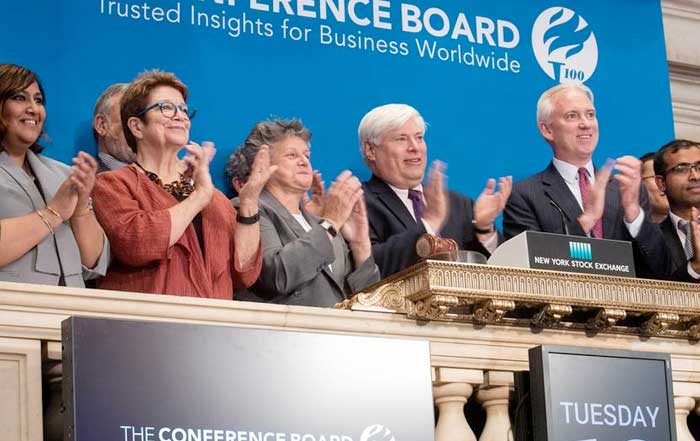An Evolving Moment of Opportunity
The fragile détente that began on a breezy May weekend in Geneva has edged closer to something more durable. Since that first encounter between Vice Premier He Lifeng, U.S. Treasury Secretary Scott Bessent, and U.S. Trade Representative Jamieson Greer, Swiss mediators have circulated a draft Geneva Framework that both capitals tentatively initialed on 5 June. The text—only forty-two pages yet enormously consequential—freezes fresh tariff hikes for 120 days, sketches phased reductions tied to verifiable purchase targets, and establishes a quartet of technical working groups. The parties will reconvene in Washington in mid-July, but in the meantime a first tranche of tariff relief takes effect on 15 May, an early confidence-building measure that traders have already priced into commodity futures from soybeans to rare-earth oxides.
Although the negotiations remain painstaking and politically fraught, the very fact that rival superpowers can still craft a shared document—however provisional—offers a sliver of optimism for boardrooms, factory floors, and households worldwide. Readers can track day-to-day developments on our news desk, yet the broader significance of Geneva 2025 requires deeper reflection: domestic politics in both nations have shifted, global supply chains have rewired, and capital markets now handicap geopolitical risk as routinely as earnings season.
Geneva Framework 2025: US-China Trade Negotiations Timeline
May 2025
First encounter between Vice Premier He Lifeng, U.S. Treasury Secretary Scott Bessent, and U.S. Trade Representative Jamieson Greer in Geneva.
June 5, 2025
Both capitals tentatively initialed the draft Geneva Framework (42 pages).
May 15, 2025
First tranche of tariff relief takes effect. U.S. drops duties on 327 product categories from 145% to 110%. China reciprocates on LNG, pharma reagents, and aircraft parts.
Mid-July 2025
Parties reconvene in Washington for follow-up negotiations.
Autumn 2025
Audit by the new Data Review Board on purchase claims, tariff resets, and subsidy disclosures.
December 2025
Heads-of-state summit planned for Kuala Lumpur.
2-Year Outlook
Pilot for cross-border data flows in financial services and autonomous-vehicle telematics between US and China.
Key Framework Components
Tariff Reductions
Average duties on Chinese goods lowered to ~85%, while Beijing trims counter-tariffs to ~70%.
Data Review Board
Co-chaired by both nations with WTO technologists and OECD statisticians for verification.
Critical Goods Corridor
Medical equipment, energy feedstocks, and key minerals to remain tariff-free even during disputes.
Digital Trade Pilot
Limited cross-border data flows for financial services and autonomous vehicles with Swiss-held encryption keys.
Economic Impact Projections
Why Switzerland Became the New Nerve Center
Neutral Ground, Technical Muscle
Bern’s seasoned economic diplomats spent months commuting between Washington and Beijing, ultimately persuading both sides that Alpine neutrality and proximity to the World Trade Organization would provide the least-politicized venue. Geneva already hosts panels on subsidies, digital trade, and environmental goods; negotiators can therefore consult WTO experts on short notice, a logistical advantage that quieted fears of procedural drift. For the Swiss, the talks also underscore the country’s soft-power brand, one increasingly tied to global governance rather than private banking alone.
Domestic Pressures: Very Different, Yet Strikingly Parallel
United States. The tariff wall that peaked at 145 percent squeezed retailers, equipment importers, and—crucially—farm states. Headline inflation moderated as the Federal Reserve held rates above 5 percent, but tariff-driven jumps in clothing and electronics costs eroded real wages. Business coalitions from the National Retail Federation to the U.S. Chamber of Commerce warned Congress that a fresh escalation could shear half a percentage point off GDP just as housing starts began to wobble.
China. Retaliatory duties of 125 percent cratered exports to North America, youth unemployment flirted with 22 percent, and a mild bout of consumer-price deflation sapped household confidence. Local governments, already burdened by infrastructure-bond repayments, leaned hard on Beijing for stimulus. Stabilizing external demand therefore became a macro-priority equal to safeguarding tech self-reliance.
With both leadership circles painfully aware that a misstep could cascade into recession, the Swiss offer of a roadmap—rather than a grand bargain—suited short-term political calendars in Washington and Beijing alike.
From Headlines to Fine Print: Core Negotiating Tracks
Tariff Architecture
The draft Geneva Framework lowers average duties on Chinese goods to roughly 85 percent, while Beijing trims its counter-tariffs to about 70 percent. Though still four times higher than the pre-war baseline, the cuts reopen lanes for LNG, mid-range electronics, and farm products, addressing swing constituencies in both countries. The language of “mutual, phased de-escalation” allows each capital to claim victory at home—Washington as proof that tariffs “worked,” Beijing as validation of U.S. pragmatism.
Market Access and Structural Reform
Washington presses for larger quotas that let wholly foreign-owned firms run cloud-computing nodes onshore, seeks transparent subsidy registries, and demands expedited licensing for American fintech ventures in Shanghai. Beijing counters by tying any concessions to a suspension of Washington’s 10 percent baseline tariffs on third-country imports, portraying the move as essential goodwill. A compromise under discussion couples an $80 billion purchasing package—spanning soybeans to regional jetliners—with a two-year pilot that grants U.S. payment-service providers limited renminbi clearing rights.
Supply-Chain Security and “Dual Ecosystems”
Both capitals now weld trade policy to industrial strategy. The CHIPS and Science Act nudges U.S. firms to “friend-shore” advanced-node fabrication, while Beijing’s Made in China 2035 successor program subsidizes domestic production of third-generation semiconductors, EV batteries, and hydrogen electrolyzers. Geneva negotiators therefore floated a “critical goods corridor” pledge: medical equipment, energy feedstocks, and key minerals would stay tariff-free even during disputes, insulating life-or-death commerce from diplomatic shocks. Multinationals from Apple to Volkswagen publicly endorse the concept, as do insurers offering contingent-business-interruption coverage at lower premiums.
Technology and Intellectual-Property Enforcement
A confidential U.S. annex details alleged forced tech transfer and cyber-intrusion cases. Washington wants enforceable court timelines and criminal penalties; Beijing, wary of “extrajudicial” conditions, offers to revive a WTO-monitored IP working group—provided the U.S. freezes additional semiconductor-equipment export bans. Think-tank scholars at the Brookings Institution caution that verification, not trust, will determine success.
Currency Stability
With the renminbi at a two-year low, Treasury negotiators inserted language committing both sides to “market-determined exchange rates” anchored to G20 norms. Beijing resists any phrasing reminiscent of the pre-2020 “manipulator” label but indicates a willingness to dampen volatility if Washington eschews currency clauses in future tariff schedules. The International Monetary Fund has quietly endorsed the compromise in staff briefings, noting that it mirrors commitments already accepted by G20 finance chiefs in Bali.
What Has Changed Since May—and Why It Matters
An Early Tranche of Relief
On 15 May, U.S. Customs will automatically drop tariff lines on 327 product categories—mostly agricultural inputs, medical devices, and select consumer electronics—from 145 percent to 110 percent. Beijing reciprocates with parallel cuts on LNG, pharma reagents, and civilian aircraft parts. Although limited in scope, the gesture arrives in time to ease cost pressures before the U.S. summer retail cycle and China’s Golden Week travel season, underscoring the talks’ concrete, if incremental, payoffs.
A Nascent Verification Mechanism
Swiss mediators persuaded both capitals to co-chair a Data Review Board staffed by WTO technologists and OECD statisticians. The body will validate purchase claims, tariff-line resets, and subsidy disclosures using shipment-level customs data. While far from a supranational court, the Board’s creation injects third-party oversight that had been missing since the collapse of the 2020 Phase One deal.
Domestic Political Optics
In Washington, bipartisan Senate legislation now ties future tariff hikes to a mandatory cost-benefit report from the U.S. International Trade Commission, limiting the executive branch’s ability to escalate quickly. In Beijing, state media frames de-escalation as evidence of zhōngshì—prudent, situation-based adjustment—rather than capitulation. Both narratives suggest negotiators enjoy slightly wider room to maneuver than six months ago.
The Digital Frontier
Perhaps the most quietly revolutionary clause is a 2-year pilot for limited cross-border data flows in financial services and autonomous-vehicle telematics. The pilot applies to U.S. cloud providers already licensed in Shanghai’s free-trade zone and to Chinese EV fleets operating in Nevada’s smart-corridor test bed. Cyber-security regulators on both sides will escrow encryption keys with neutral Swiss trustees—an unprecedented arrangement that, if scaled, could rewrite the rulebook for digital trade. Explore our ongoing technology coverage for deeper dives into the architecture behind secure data corridors.
Ripples Across Regions and Sectors
Europe: Cautious Applause, Underlying Anxiety
Brussels publicly hails the Geneva progress while privately fretting about trade diversion reminiscent of 2020. To hedge against losing Chinese procurements, the European Commission accelerates joint semiconductor ventures, critical-raw-material stockpiles, and new free-trade talks with Mercosur. A forthcoming Strategic Autonomy Act earmarks €40 billion for advanced-packaging plants in Saxony and Provence—evidence that Europe will bolster its own supply-chain buffers even under a U.S.–China truce.
Asia–Pacific: From Relief to Realignment
Export powerhouses Japan and South Korea welcome tariff reprieve, hoping it revives electronics demand. Yet both governments double down on “China-plus-one” manufacturing strategies, dangling tax holidays to lure investment into Osaka Bay and Korea’s Yellow Sea free zones. ASEAN economies that initially profited from trade diversion now fear blanket U.S. tariffs may one day ensnare them too, spurring Singapore to offer its own events hub for follow-up diplomacy.
Emerging Markets and Commodities
Brazilian soybean exporters celebrate Beijing’s additional purchase quotas, yet Petrobras models show that a demand shock from a breakdown in talks could shave $8 billion off 2025 oil revenue. The World Bank estimates commodity exporters stand to lose up to $35 billion if tariff détente collapses—one reason South Africa’s finance minister lobbied the IMF for contingency swap lines at the spring meetings.
Multilateral Guardianship
The IMF warns current tariffs could cut 2025 global growth by 0.6 percentage points, while the WTO projects merchandise trade could drop 1.5 percent absent a deal. Both institutions stand ready to mediate future subsidy disputes if Washington and Beijing agree to revive dormant committees—a move that would shift battles from tit-for-tat tariffs to rules-based forums. Learn more about multilateral trade governance from the WTO’s official portal.
What It Means for Business Strategy
Supply-Chain Architecture
Consultants at McKinsey & Company peg relocation costs for electronics assemblers at 20–25 percent of annual EBITDA. A ceasefire allows CFOs to pause emergency moves, redirecting capital toward automation and climate mitigation. Yet most boardrooms now plan for dual ecosystems: one footprint optimized for the Chinese domestic market, another anchored to U.S. or Europe-centric corridors.
Capital Markets and Currency Chess
Dollar strength has mirrored tariff rumors; an interim accord capping duties below 90 percent could lift Asian currencies and spark rotation into cyclicals. Conversely, a collapse would likely push 10-year U.S. Treasuries below 3 percent as investors flee to safety. Check our finance section for daily yield-curve analysis and sector rotation dashboards.
Jobs and Skills
The U.S. manufacturing rebound touted in presidential speeches still depends on predictable input costs. A 60-point tariff cut on imported Chinese machinery could save approximately $9 billion in annual capital-equipment outlays, freeing funds for domestic hiring. In Guangdong, textile clusters project that 50-percent tariff relief could restore 200,000 export-linked jobs by December. For localized figures and training-grant updates, bookmark our jobs dashboard.
ESG and Climate Linkages
A remarkable sidebar to the Geneva process is its alignment with sustainability goals. Both delegations agreed to preserve zero-tariff status on low-carbon technologies—solar wafers, electrolyzers, and next-gen heat pumps—ensuring that climate cooperation remains partially insulated from broader rivalry. Advocates at the International Energy Agency applaud the carve-out as a template for future green lanes in trade pacts. Corporations pursuing science-based targets should monitor the evolving tariff schedule to optimize decarbonization capex.
Investor Lens: Positioning Portfolios for an Uncertain Truce
Institutional managers now factor geopolitical volatility into base-case earnings multiples. Geneva’s roadmap, if honored, implies mid-single-digit earnings upside for materials and industrials due to lower input costs, albeit tempered by a stronger yuan. Sector allocation notes published by BlackRock recommend staggered entry points rather than lump-sum deployment, arguing that each working-group milestone—tariffs, agriculture, digital trade, dispute settlement—creates binary event risk. Retail investors, meanwhile, can follow curated watchlists on our economy page and compare ETF exposures via Morningstar’s fund screener.
Strategic Playbook for Policymakers, Executives, and Workers
Lock in communication channels. Regular ministerial calls avert miscalculation and provide market guidance.
Diversify without panic. The base case is staggered rollback, not sudden dismantlement; abrupt relocations waste capital.
Leverage new incentives. EU microchip grants, U.S. production credits, and China’s VAT rebates can jointly underwrite resilient yet cost-efficient footprints.
Upskill labor forces. Advanced robotics, additive manufacturing, and battery chemistry require vocational programs aligned with the reshoring wave—topics explored in depth in our business features.
The Road Ahead
The U.S.–China rivalry will not dissolve over fondue and Alpine vistas, yet Geneva 2025 proves pragmatic compromise remains possible when political incentives align. Each capital—eager to protect growth, stabilize currencies, and preserve domestic legitimacy—recognizes that outright economic decoupling would undercut its own modernization agenda. Whether the current momentum yields a lasting framework or merely a pause in hostilities depends on meticulous follow-through: transparent subsidy logs, prompt dispute adjudication, and credible enforcement of intellectual-property protections.
For executives drafting contingency maps, workers enrolling in new certification courses, and consumers eyeing the price of smartphones, the next milestones are clear: mid-July talks in Washington, an autumn audit by the new Data Review Board, and a December heads-of-state summit penciled for Kuala Lumpur. Our international desk will analyze each twist, while travel correspondents stand ready to explore ripple effects from Zurich to São Paulo.
Global prosperity in 2025—and the credibility of a rules-based trading system—hangs on the ability of these two superpowers to compete without wrecking the scaffolding of modern commerce. For continuous updates, subscribe to usa-update’s morning brief and explore sector-specific dashboards across economy, finance, jobs, and technology. In a world where tariff codes and data corridors now shape everything from wage growth to climate innovation, informed readers hold the ultimate comparative advantage.
Learn more about sustainable business practices through the OECD’s policy toolkit, and stay connected with real-time Geneva coverage via the Financial Times’ trade hub.










